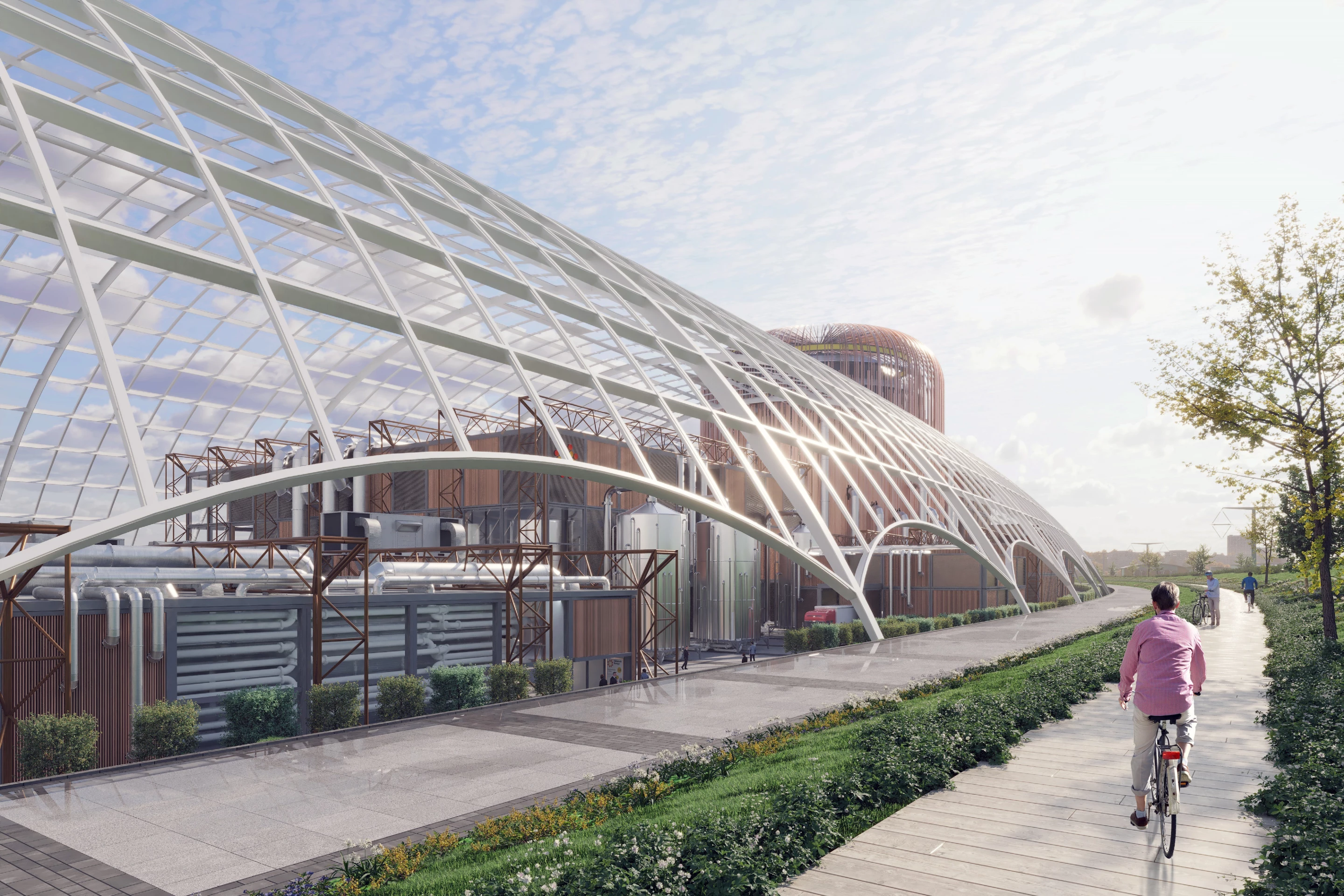Tokamak Energy has released the first images of what its commercial fusion power plant, which it says would safely generate enough electricity to power 50,000 homes in the 2030s, would look like.
The company, based near Oxford in the UK, plans to build a fusion pilot plant around its upcoming ST-E1 tokamak, which it says will be ready for rollout in the early 2030s to demonstrate the ability to deliver electricity to the grid, opening the potential for 500-megawatt commercial plants to be deployed worldwide.
When a mix of deuterium and tritium, two forms of hydrogen, is heated at temperatures hotter than the sun’s core, they fuse to create helium and release energy that can be harnessed to produce electricity and heat. The plasma created by the heating process is confined using strong magnets arranged in a ring-shaped device called a tokamak.
Fusion is extremely efficient, creating far more energy per kilogram of fuel than the burning fossil fuels like coal, oil, or gas produces. One kilogram (2.2 lb) of fusion fuel releases the same energy as burning about 10,000 tonnes (11,023 ton) of coal. Tokamak Energy says that fusion offers other advantages that other renewable energy sources lack.
“Renewables are fantastic and absolutely vital,” said Warrick Matthews, managing director of Tokamak Energy. “However, we also need dependable, reliable power you can switch on around the clock – when the sun isn’t shining or wind isn’t blowing – without high storage costs. Fusion fills that important gap as part of a sustainable net zero future.”
Fusion is the opposite of nuclear fission, which occurs when a neutron slams into a larger atom, exciting it and causing it to split into two smaller atoms, creating energy. Unlike nuclear fission, fusion doesn’t create nuclear waste and, moreover, fusion power plants take up less land space.
“Fusion energy from power plants like this will be zero carbon, safe, secure, extremely efficient and run on limitless fuel from seawater,” Matthews said. “Fusion is the ultimate energy source – no emissions and you can put a plant where you need it.”

Plants powered by fusion energy can be connected to a traditional turbine to create electricity and heat for industrial purposes, such as in metalworks and desalination plants or use in hydrogen production.
Tokamak Energy has spent years developing a compact, spherical tokamak. In 2021, the company achieved a fusion threshold plasma temperature of 100 million degrees C (180 million degrees F) using their ST40 with a unique spherical design, highlighting its efficiency and scalability. Next it plans to build that device's successor, the ST80-HTS, at the Culham Campus of the UK Atomic Energy Authority in 2026, followed by the completion of the ST-E1 in the early 2030s.
“Our spherical tokamak design is more efficient than the traditional shape, with lower capital investment, operating costs and a smaller footprint,” said Matthews. “It has to be a globally deployable solution because the technologies and innovations available today are clearly not enough.”
With the world working towards addressing anthropogenic climate change, Tokamak Energy sees the transition from fossil fuels to fusion energy as a no-brainer.
“Fusion power plants have that unique ability to support and sustain a long-term, permanent transition from fossil fuels by ensuring future clean energy grids are resilient, flexible and safe for our communities,” Matthews said.
As the plants would be safe and emissions free, the company says they could be built close to where power and heat is needed, such as near large populations and industry centers.
Source: Tokamak Energy







